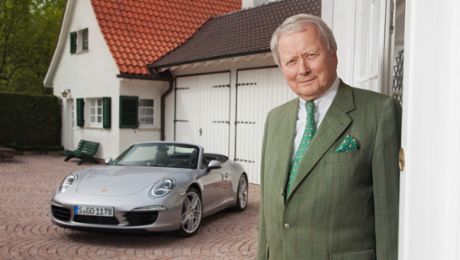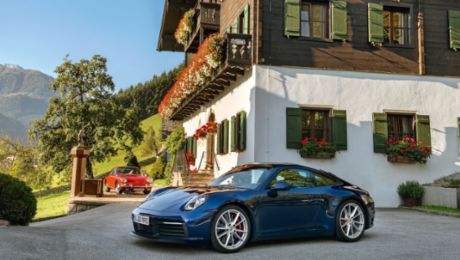The Schüttgut estate on a mountain pasture in the Austrian town of Zell am See is more than six hundred years old. Ferdinand Porsche bought it in 1941 as a retreat for himself and his family, and because he wanted to maintain a connection with Austria long after putting down new roots in Stuttgart. His son Ferry, the founder of today’s company and the father of Wolfgang Porsche, had discovered the farmstead back in the 1930s while driving through the mountains. The area around the Großglockner, Austria’s highest peak, is an ideal place for test-drives and tours of discovery. As of 1943, Schüttgut became even more of a refuge for the entire family. Eleven children, including Wolfgang, enjoyed the idyllic location with its peaceful lake and imposing mountains far removed from the war.
Ferdinand Porsche was a brilliant designer and engineer. But his youngest grandson didn’t see much of him. Upon returning from a French prisoner-of-war camp, Ferdinand had health troubles, yet also a sense of restlessness. From Wolfgang’s perspective as a child, his grandfather was always driving off or just arriving from somewhere. But whenever Ferdinand was around, he was a kind and attentive man who would do things like take his grandson to the movies. Wolfgang would sit next to him and then delight in asking him afterward what he thought about the film, well aware that his grandpa had quietly dozed off.
Wolfgang Porsche (front) in 1950 at the age of seven with his father, Ferry, and brothers Hans-Peter (left), Gerhard (right), and Ferdinand Alexander (in sunglasses), and a Porsche 356 Coupé.
In 1949 the small but high-caliber development team led by Wolfgang’s father, Ferdinand “Ferry” Porsche, returned to the German city of Stuttgart from wartime exile in the Austrian town of Gmünd in Carinthia. The throng of children slowly began to leave Schüttgut. The Porsches moved to Zuffenhausen and Feuerbach, and the Piëchs to Salzburg.
Even under the austere postwar conditions, Ferdinand Porsche’s seventy-fifth birthday celebration at Solitude Palace near Stuttgart in the fall of 1950 was quite an event. All of seven-year-old Wolfgang’s brothers and cousins were invited, but he himself was considered too young. To this day, Wolfgang Porsche remembers gazing longingly from the attic window of the Porsche villa on Feuerbacher Weg as the family set off for the festivities. Five months later, Ferdinand Porsche passed away.
The sports car experience: An element of primary importance
Wolfgang Porsche attended the Odenwald School in the Ober-Hambach district of the Hessian town of Heppenheim, a leading boarding school for progressive education. In addition to receiving his Abitur (general qualification for university entrance), he completed an apprenticeship as a metalworker. The usual final requirement for a journeyman in the 1960s was to forge a set of fireplace tools and a grate, and candidates were expected to devote extraordinary effort to the project. Wolfgang Porsche hasn’t done much metalworking since then, but he does note that he has retained a practical bent. An element of primary importance throughout his life has been the sports car experience—on weekends and vacations, but also in his thoughts. There were lengthy discussions with his father, Ferry, and his brother Ferdinand Alexander about the successor to the 356, and evening test-drives on the nearby autobahn to Leonberg and through the Engelberg Tunnel. Starting in 1951, the Grand Prix on the Nürburgring was both a must and a joy for the family, as was the twenty-four-hour race in Le Mans. Customers of the young sports car brand made it a point to use the Porsche greeting—a brief flash of the lights. And Saint Christopher appeared on the steel dashboard of the 356.
Le Mans has been a magnet for the Porsche brand since 1951, and was for young Wolfgang from an early age as well. Trips to the Sarthe region of France were both an adventure and a matter of course. His first visit to Le Mans was captured particularly well: all the action at the pits, thirteen-year-old Wolfgang half-reclining on a wall with the casualness of youth, a stopwatch in his hand, his father at his side, and Porsche factory manager Hans Klauser in front.
Wolfgang Porsche (1956, laying) with his father Ferry Porsche (plaid cap) and Hans Klauser (light cap) at the pit of the 24-hour race in Le Mans
The Le Mans adventure quickly became more glamorous. Following its first aerodynamic 356 Coupés, Porsche turned a 550 A Spyder into a coupe that Count Berghe von Trips and Richard von Frankenberg drove to fifth place overall. They needed only 135 air-cooled horsepower for this feat—an early indication of the endurance abilities of Porsche sports cars, especially under tough conditions.
Le Mans has remained a constant in Wolfgang Porsche’s life to this day. The chairman of the board stood in the pits the entire time as Porsche won three successive overall victories in 2015, 2016, and 2017, listening to the radio transmissions on his headset. When his cars passed the finish line he embraced the drivers and racing directors, and after the triumph in 2016 he even had tears of sympathy in his eyes for the loser—the leading Toyota had lost power and rolled to a standstill after twenty-three hours and nearly fifty-eight minutes.
In the mid-1960s, with racing in his heart, Wolfgang Porsche made a deliberate decision to become a businessman and complete the appropriate studies in Vienna. Located in an elegant part of the city, the University of World Trade in Vienna had a brilliant reputation not only for its studies but also for its student life in general. Wolfgang Porsche traded his first 356 for a much less showy VW Beetle, albeit with a 95 hp Porsche engine and Nardi steering wheel. The car could give the Mercedes 220 a run for its money, he recalls with a smile. Meanwhile, his Austrian persona was developing further. His academic degree, polished manners, and discreet politeness, enhanced by his command of elegant “Schönbrunn” German, created an appearance that matches his famous name.
In Zell am See in 1972, Ferry Porsche decided to have the family withdraw from managing the company. Times had changed, and both the factory and production were rapidly expanding. Wolfgang Porsche was the only family member who didn’t have to step down because, as the youngest, he hadn’t yet actively joined the company. Looking back, he sees the wisdom of his father’s decision. No one wins when there are too many cooks in the proverbial kitchen.
The Porsche brand sharpened its profile
Ernst Fuhrmann, the first non–family member to head the company’s Executive Board, was an acknowledged expert on Porsche cars. An engineer by training, he had joined Porsche’s engine testing department in 1947 and created the famous Fuhrmann engine in the mid-1950s: a flat-four assembly with overhead camshafts. In 1973 the first Porsche with 1,000 hp appeared—the CanAm version of the 917—first as the 917/10 TC, then as the 917/30 Spyder, which actually exceeded the 1,000 hp mark. Of even greater significance was the 911 Carrera RS 2.7 of 1973, which represents a milestone from today’s perspective. The Porsche brand was sharpening its profile.
Following a traineeship at a bank, Wolfgang Porsche became a businessman. He spent twenty-seven years importing Yamaha motorcycles to Austria and Hungary. To gain additional practical experience in the automotive industry, Wolfgang worked for Daimler-Benz in Stuttgart from 1976 to 1981. His three brothers—Ferdinand Alexander, Hans-Peter, and Gerhard—had all since embarked upon their own careers. At his father’s behest, he joined the Supervisory Board of Dr. Ing. h.c. F. Porsche AG. Now he was entirely with Porsche.
In 1977 the Porsche 928—featuring a modern, aerodynamic, water-cooled V8 engine—was named car of the year by international journalists. Yet it still didn’t have what it needed to succeed the 911. In brief, it had too much transaxle and not enough Porsche. The 911 was going through difficult times as well. In the wake of the oil crises in 1973 and 1979, an air-cooled engine seemed explosively powerful but no longer feasible for the future. Peter Werner Schutz, the German-American chairman of the Executive Board, still saw potential in the 911 and had the 911 SC introduced to the market as a full cabriolet. The 911 was saved.
Wolfgang Porsche (far right) celebrating the seventy-fifth birthday of his father, Ferry (center), at the Porsche villa in Stuttgart in 1984 with his brothers Hans-Peter, Gerhard, and Ferdinand Alexander (from left).
In the early 1990s the company’s very existence was threatened. But the family remained loyal and found Wendelin Wiedeking to be an assertive reformer whose modernization measures based on Japanese techniques shocked many of his contemporaries in Zuffenhausen. No stone in the venerable factory was left unturned.
Wolfgang Porsche, the youngest, became the family’s spokesman
The model range was revolutionized in similar ways, including a shared-part strategy for 911 models and the mid-engine two-seater Boxster, and water cooling for all the engines. That was followed by an SUV with the segment’s hottest model name, and then a four-door Gran Turismo. The Executive Board developed a daring vision for the future, which met with the approval of Supervisory Board member Wolfgang Porsche.
Porsche’s last air-cooled engine was produced in Zuffenhausen in March of 1998. Ferry Porsche had taken over the simple air-cooled principle from Volkswagen and expanded it to 450 hp in the Porsche 911 Turbo S of 1998 before the curtains fell for environmental and noise-related reasons. Water cooling had now also come to Porsche’s flat engines—and many fans of the 911 were up in arms. But the new generation, which laid the foundation for the cars of today, has itself become a classic.
Ferry Porsche died in Zell am See on March 27, 1998. The company founder had created an automotive legend. He had also forged an exemplary corporate culture, a superb mixture of progress and passion no one wanted to change. When Wolfgang Porsche, the youngest member of the third generation, was selected to be the family’s spokesman, it was seen as a clear sign of consensus and a future-oriented approach.
Wolfgang Porsche, who has always been intimately involved with the company, has a strong sense of tradition and the significance of his family. So it was a logical step to acquire the Schüttgut estate from his relatives, which has again become a family retreat as well as a final resting place for earlier generations. Amidst the Großglockner, Kitzsteinhorn, and Schmittenhöhe mountain peaks, Wolfgang Porsche, joint owner and Supervisory Board member of the Volkswagen Group, maintains a balance between responsibility for the largest industrial company in Germany and his own passions. In what little leisure time he has, he paints still lifes in oil. He also hunts, occasionally even when the countryside is a meter deep in snow. And he collects cars, especially those of the Porsche brand. His personal fleet includes a Porsche tractor, but also an Austro-Daimler hill-climbing champion, the perfect entry in a concours d’elegance. The best part about Wolfgang Porsche’s collection is that he drives his treasures regularly and with nonchalance. As do his children. One thing is certain: Wolfgang Porsche’s sports cars will definitely not suffer damage from disuse.
Wolfgang Porsche and his second-youngest son, Ferdinand Porsche, at the celebration of his sixty-fifth birthday.
Back to Wolfgang Porsche as a manager. The company’s continuing growth required some type of security in the industry. It therefore made sense to join forces with Volkswagen. Wolfgang Porsche keeps watch over developments as a member of various supervisory boards—with charm, consistency, and strictness when necessary. He travels so much, especially among the five sites of Salzburg, Zell am See, Wolfsburg, Ingolstadt, and Zuffenhausen, that he rarely spends more than three consecutive nights in one place.
The Porsche Group has started to invest billions in electromobility and digitalization. Wolfgang Porsche is integrating the next—now the fourth—generation of his family into the company and preparing the boys to meet the challenges of the future. He’s proud of his daughter, three sons, and four grandchildren. At home in Salzburg and in Zell am See, he works in his father’s office in Zuffenhausen, which has been preserved in its original form. He’s a supervisor in the truest sense of the word. A representative. And a passionate promoter. Wolfgang Porsche both honors tradition and pursues progress.
Dr. Wolfgang Porsche – Quotes
Family
“I inherited my passion for automobiles from my father. I’m a car person, even though I’m a businessman rather than an engineer.”
Values
“I feel personally connected with my family, the company, and all the employees. People and employees have always been the focus for the Porsche family and therefore for me as well. Mutual appreciation and interest have been crucial factors in the success of the Porsche company. My grandfather Ferdinand and my father, Ferry, instilled these values in me from early childhood on. A Porsche isn’t just a fast car. Porsche is a community.”
Generations
“I have four children, who of course are very important to me. (…) Whether one of my two youngest sons will enter the auto business at some point is entirely up to them. My only wish is that they continue to be good people and are happy.”
Responsibility
“Business leaders can only make progress if they’re constantly willing to question and change both themselves and their companies. Today’s business leaders sometimes also have to be revolutionaries.”
Dr Wolfgang Porsche
May 10, 1943: Born in Stuttgart
1965: Higher education entrance qualification –
1965–1971: Studies at the University of World Trade, Vienna. Graduates with a degree in business administration
1973: Doctorate in commercial sciences at the University of World Trade, Vienna
1976–1981: Undertakes roles in various sales divisions in Germany and abroad for Daimler-Benz AG, Stuttgart-Untertürkheim
Since 1978: Member of the Supervisory Board of Dr. Ing. h.c. F. Porsche AG, Stuttgart, member of the Supervisory Board and Director for various Porsche sales companies
1983: Member of the Supervisory Board in the various committees of Porsche Holding Salzburg
1988–2011: Managing Partner of Porsche Holding Salzburg
Since 2007: Chairman of the Supervisory Board of Dr. Ing. h.c. F. Porsche AG, Stuttgart, Chairman of the Supervisory Board of Porsche Automobil Holding SE, Stuttgart
Since April 24, 2008: Member of the Supervisory Board of Volkswagen AG, Wolfsburg
Since May 10, 2012: Member of the Supervisory Board of Audi AG, Ingolstadt
Info
Text first published in the Porsche customer magazine Christophorus, No. 386
Text by Herbert Völker // Photos by Porsche
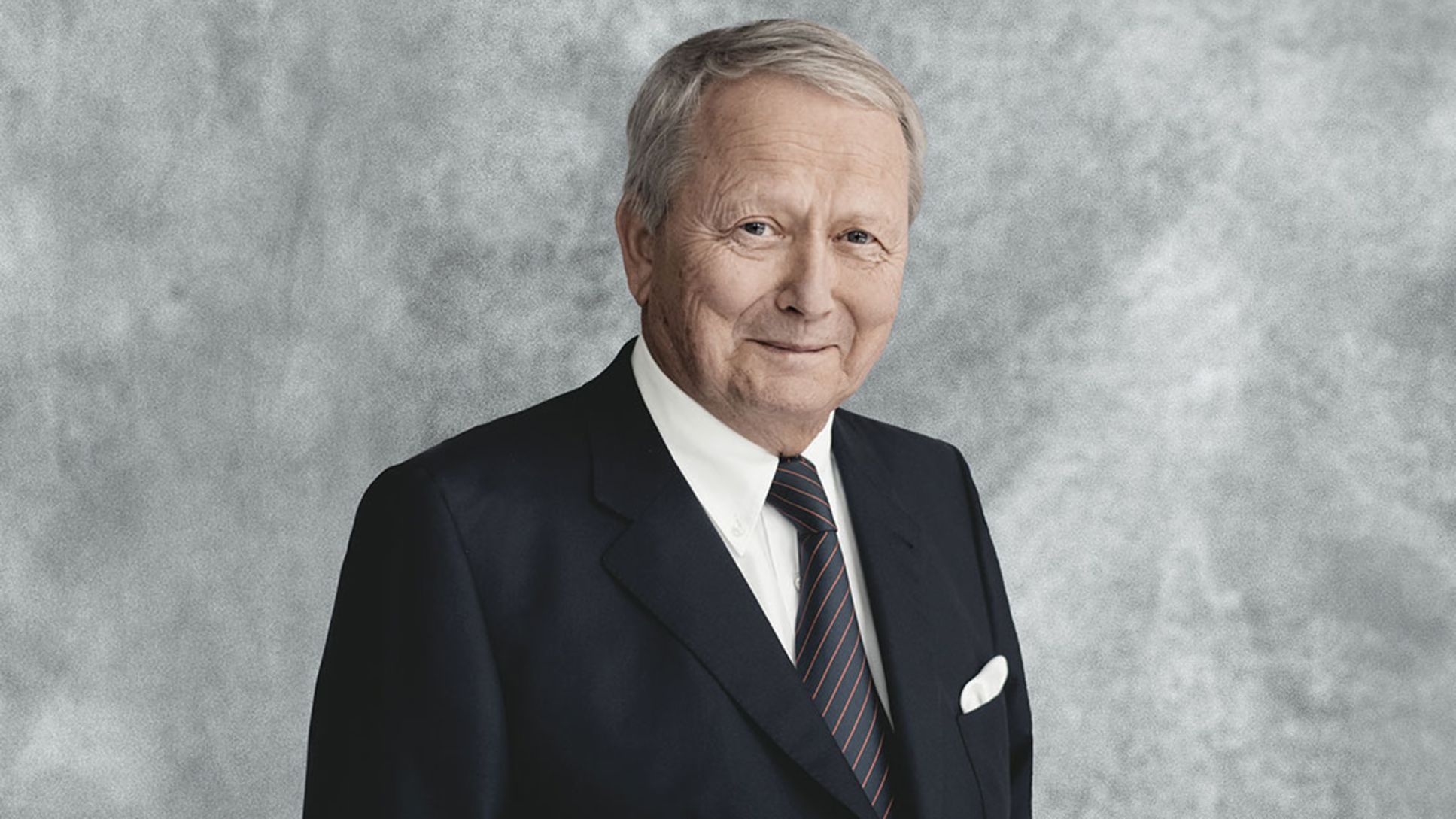
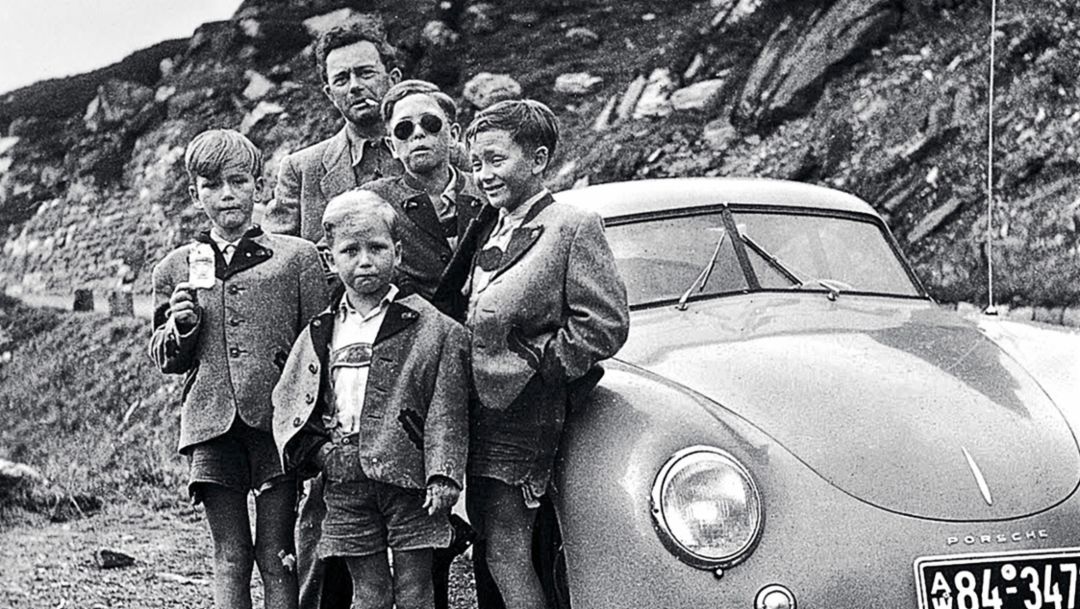
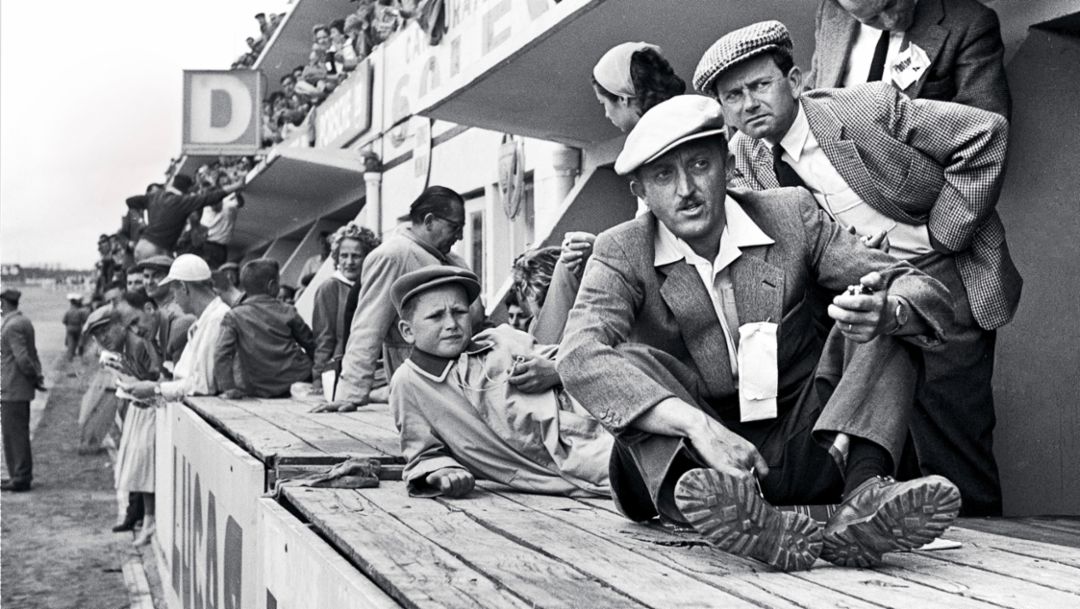
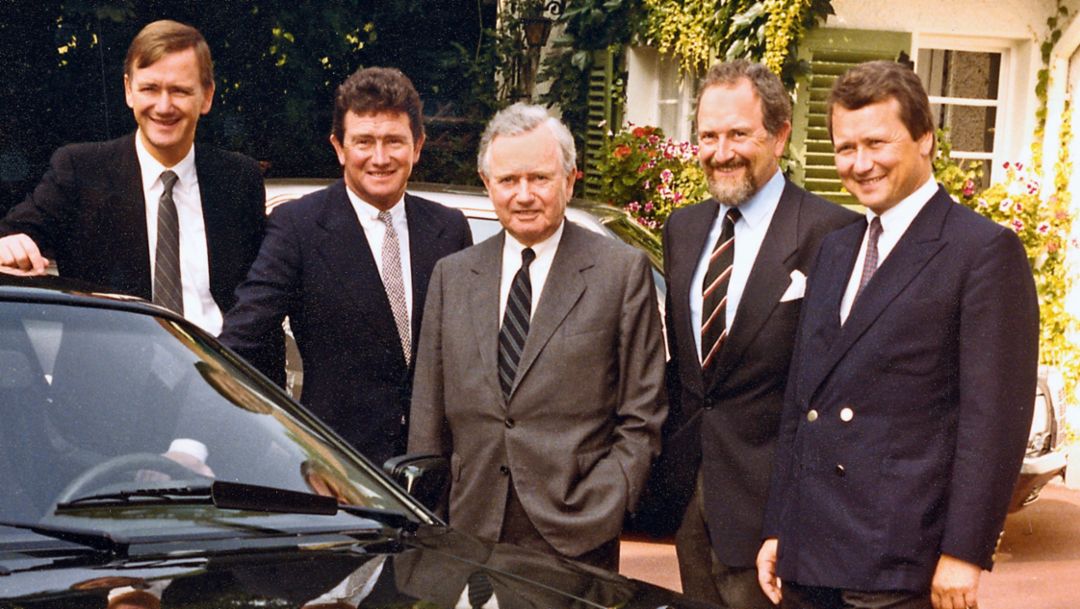
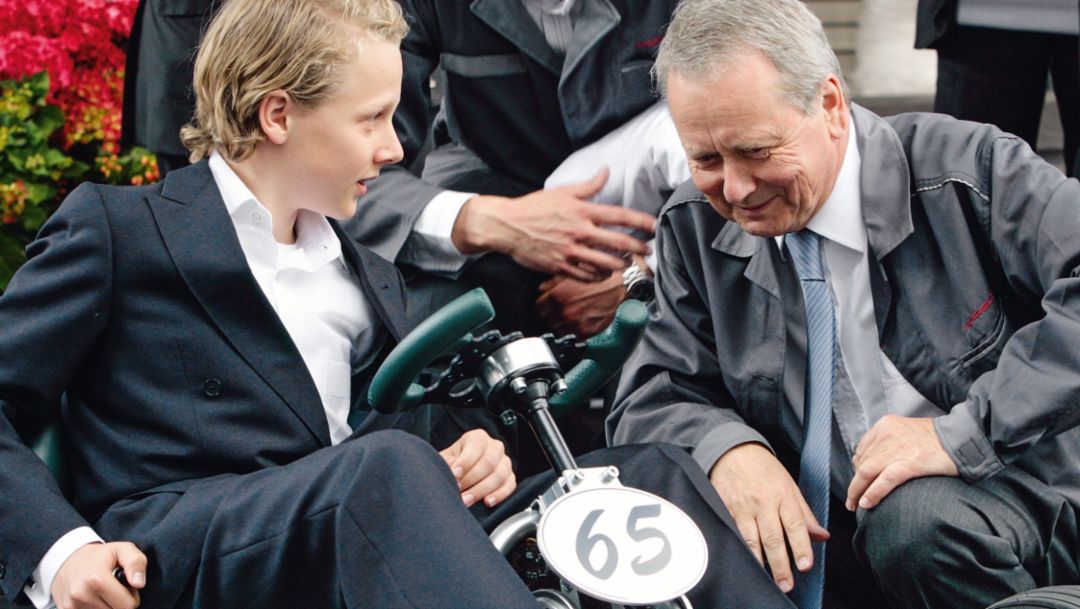

-am-356-B-vor-der-Porsche-Villa-in-Stuttgart.jpg/jcr:content/b-Wolfgang-Porsche-(2016)-am-356-B-vor-der-Porsche-Villa-in-Stuttgart.jpg)
